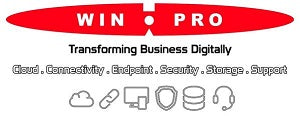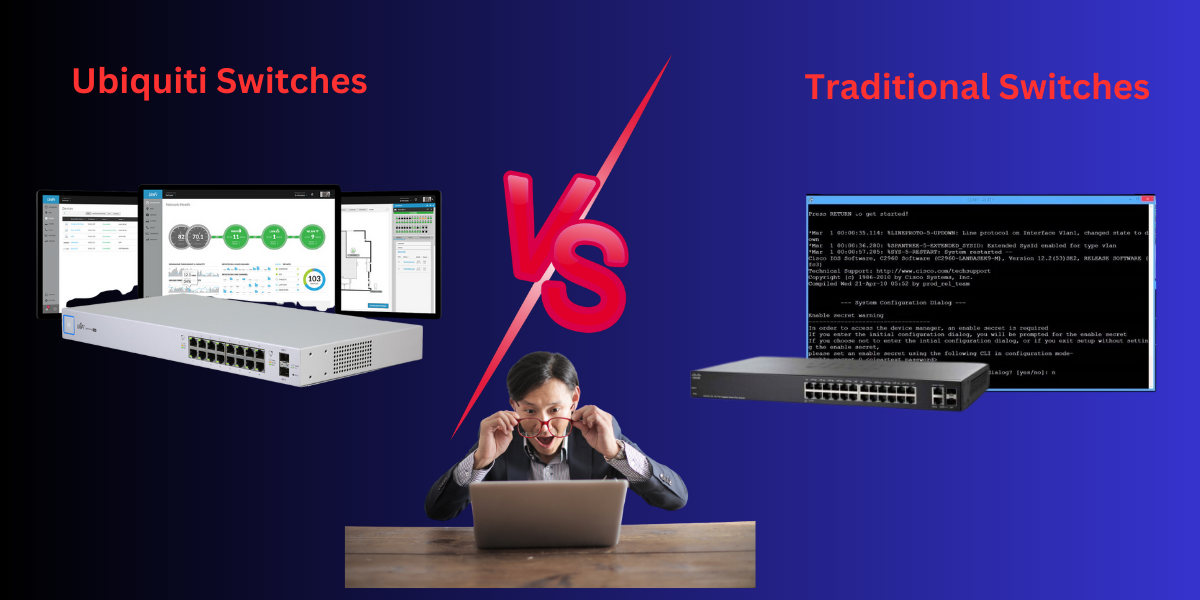The Importance of Switches in Networking

Switches are an integral part of any network infrastructure, whether it’s a small home network or a large corporate network. They connect devices together and facilitate the flow of data between them.
Without switches, communication between devices would not be possible, and the internet as we know it today would not exist. Switches act like traffic controllers in a network.
They help manage the flow of data by directing it to its intended destination. This way, data doesn't get lost or sent to the wrong device.
In addition, switches help prevent network congestion by managing bandwidth allocation and prioritizing which devices get more bandwidth based on their needs. In essence, switches are critical in ensuring that networks run smoothly and efficiently.
They make it easy for us to send information from one device to another seamlessly. Without them, our daily tasks such as browsing the web, sending emails or streaming videos would be almost impossible.
Purpose and Scope of Comparison
This comparative analysis aims to provide an overview of two types of switches: Ubiquiti switches and traditional switches (also known as legacy switches). We will explore their features, benefits as well as their drawbacks so that you can make an informed decision about which switch is best suited for your networking needs. We will also compare these two types of switches based on several criteria including performance, cost-effectiveness, ease-of-use and security features among others.
The ultimate goal is not only to highlight the differences between these two technologies but also help you understand which one may be a better fit for your networking environment depending on your specific requirements. So let's dive into each type of switch in more detail in this comprehensive comparative analysis!
Ubiquiti Switches: What are they?

If you're reading this article, chances are you're well-versed in networking technology. However, for those who aren't as familiar, a switch is a device that connects different devices together on a network.
It allows them to communicate with each other and share resources. Ubiquiti switches are a series of network switches manufactured by Ubiquiti Networks, Inc. They offer a range of features and benefits that make them stand out from traditional switches
Definition and Explanation of Ubiquiti Switches
Ubiquiti Network's switches come in various models that cater to different needs. The Unifi Managed Switches offer extensive management capabilities and the EdgeMax series offers advanced routing functionality. The Unifi Managed Switches come with an easy-to-use interface that allows users to monitor and configure their networks easily through a web-based interface or mobile app.
They also support VLANs and Quality of Service (QoS) which improves network performance by giving priority to critical applications. On the other hand, the EdgeMax switches offer advanced routing features such as OSPF, BGP, VRRP which provide enterprise-level functionality previously only available on expensive hardware.
Overview of their Features and Benefits
One of the biggest advantages of Ubiquiti switches is their affordability while still offering enterprise-level features like VLANs, link aggregation, QoS, etc.
Additionally, they come in compact sizes making it easier to install them in smaller spaces compared to traditional switches. Another feature offered by Ubiquiti switches is their scalability. With UniFi Managed Switches users can add more devices as needed easily since they have modular designs.
Comparison to Traditional Switches
Traditional network switches usually require manual configuration using command-line interfaces (CLI). This makes it difficult for small businesses that may not have an IT department.
In contrast, Ubiquiti switches are designed to cater to small businesses and home users who need easy-to-use, plug-and-play devices. They come with a user-friendly interface that allows users to configure their networks without requiring any specialized knowledge.
Another benefit of Ubiquiti switches is that they are cloud-managed. This means that you can monitor and configure your switches remotely from anywhere in the world.
Overall, Ubiquiti switches offer a cost-effective solution for businesses with limited IT budgets while still offering enterprise-level features. With their easy installation and management, they are an excellent choice for small businesses looking for simple yet powerful network
Traditional Switches: What are they?


Traditional switches have been the backbone of networking for decades, providing connections between devices on a local area network (LAN). A switch is a piece of hardware that connects different devices and routes data packets from one device to another. Traditional switches are designed to perform this function with high reliability and low latency.
Definition and explanation of traditional switches
A traditional switch is a hardware device that connects multiple devices on a LAN. It operates at the data link layer (layer 2) of the OSI model, which means it can read the physical MAC addresses of devices connected to it and forward packets to their intended destination. Traditional switches use various protocols such as Spanning Tree Protocol (STP) and Link Aggregation Control Protocol (LACP) to build a robust network.
Overview of their features and benefits
Traditional switches offer several benefits over other networking options. They provide dedicated bandwidth for each device, ensuring that there is no congestion or slowdowns due to competing traffic.
They also have built-in features like Quality-of-Service (QoS) controls that prioritize certain types of traffic, such as video or voice over IP. Traditional switches are also highly reliable due to their design.
They use redundant power supplies, cooling fans, and other components that ensure minimal downtime in case of failure. Additionally, many traditional switches offer advanced security features like Access Control Lists (ACLs), which allow administrators to restrict access based on user roles or network segments.
Comparison to Ubiquiti switches
While traditional switches have been reliable workhorses for decades, they do have some disadvantages compared to newer options like Ubiquiti switches. One major disadvantage is cost – traditional switches tend to be more expensive than Ubiquiti alternatives.
Another disadvantage is scalability – traditional switches often require complex configurations when adding new users or devices, which can be time-consuming and error-prone. In contrast, many Ubiquiti switches offer plug-and-play setup that simplifies network expansion.
Traditional switches may lack the advanced features and flexibility of newer options like Ubiquiti switches. For example, traditional switches often lack the ability to prioritize certain types of traffic or provide granular control over bandwidth allocation.
Ubiquiti switches also offer more robust management tools and remote access capabilities that enhance their overall usability. Traditional switches remain a reliable and effective option for local area networking.
However, they do have some limitations compared to newer options like Ubiquiti switches, particularly in terms of cost and scalability. Organizations should carefully evaluate their networking needs before deciding which switch type is best suited for them.
Cost Comparison: Ubiquiti vs Traditional Switches
Initial Cost Comparison
If you're in the market for a switch, you're probably wondering how much it's going to cost. One of the first things you'll notice is that Ubiquiti switches tend to be less expensive than traditional switches. That's because they are designed for small to medium-sized businesses that don't have a lot of money to spend on IT infrastructure.
However, this doesn't mean that Ubiquiti switches are low-quality. In fact, they offer many of the same features and benefits as traditional switches at a fraction of the cost.
To give you an idea of how much money you can save by choosing a Ubiquiti switch over a traditional one, let's take a look at some prices.
A 24-port managed Gigabit Ethernet switch from Cisco can set you back over $1000, while a comparable switch from Ubiquiti costs around $500.
That's a savings of 50%! Of course, prices will vary depending on the model and vendor you choose.
Long-term Cost Analysis
While initial cost is important, it's also important to consider long-term costs when choosing between Ubiquiti and traditional switches. One factor to keep in mind is maintenance costs.
Traditional switches typically require more maintenance than Ubiquiti switches because they have more complex configurations and interfaces. Another factor to consider is energy consumption.
Traditional switches tend to use more energy than Ubiquiti switches because they are designed for larger networks with more devices connected at any given time. This can lead to higher electricity bills over time.
When comparing long-term costs between Ubiquiti and traditional switches, it's important to consider scalability. As your business grows and your network needs change, you may need to add more ports or upgrade your switch altogether.
With traditional switches, this can be a costly and time-consuming process. However, with Ubiquiti switches, scalability is built into the design.
You can easily add more ports or upgrade your switch without having to replace the entire unit. While traditional switches may have a lower initial cost, they can end up being more expensive in the long run due to higher maintenance and energy costs.
On the other hand, Ubiquiti switches offer a lower overall cost of ownership thanks to their ease of maintenance and scalability features. Ultimately, which switch you choose will depend on your budget and networking needs.
Ease-of-use Comparison: Ubiquiti vs Traditional Switches

Configuration Process Comparison
When it comes to configuring switches, ease-of-use is a major factor. Ubiquiti switches come with a user-friendly web interface that is easy to navigate, even for those who are not networking experts. The interface is intuitive and allows users to quickly configure VLANs, link aggregation, and other advanced features.
The configuration process for Ubiquiti switches is very straightforward and requires minimal technical knowledge. On the other hand, traditional switches often require users to use command-line interfaces (CLI) to configure them.
CLI can be intimidating for those who are not familiar with it and can be time-consuming even for experienced network engineers. It takes more time to configure traditional switches than it does with Ubiquiti switches.
User Interface Comparison
The user interface of a switch plays an important role in how easy it is to use the device. When comparing Ubiquiti vs traditional switches, the former takes the lead when it comes to user interface design. Ubiquiti's dashboard offers a clean and simple layout that provides an overview of all connected devices and their status.
Users can easily see which ports are in use and which ones are available for connection without having to scroll through pages of data or study color-coded LEDs on front panels as most traditional switch do. Traditional switches usually have web interfaces as well, but their designs tend to be outdated or difficult compared to newer technologies like those used by Ubiquiti.
They can also be cluttered with information that may not be relevant or useful in some situations. Additionally, many traditional switch vendors offer proprietary software tools that require special training or certifications before they can be used effectively.
This adds another layer of complexity that isn't present with Ubiquiti's simple web-based dashboard. Ultimately, when comparing ease-of-use between these two types of switches, Ubiquiti emerges as the clear winner due to its simple and intuitive user interface design.
Security Comparison: Ubiquiti vs Traditional Switches
Security feature comparison

When it comes to networking switches, security should always be a top priority. Both Ubiquiti and traditional switches offer several security features that are critical in protecting your network from external threats. Ubiquiti switches come with a range of security features, including the ability to create VLANs (Virtual Local Area Networks) and manage access control lists (ACLs).
This allows you to create secure zones within your network and restrict unauthorized access. Additionally, Ubiquiti switches support advanced security protocols such as 802.1X authentication, which provides an added layer of protection against unauthorized access attempts.

On the other hand, traditional switches also offer several security features such as MAC address filtering and control over port-based network traffic. These switches also support advanced encryption protocols like SSH (Secure Shell) and SSL/TLS (Secure Socket Layer/Transport Layer Security) for secure connections.
Vulnerability analysis
While both types of switches offer robust security features, there are still potential vulnerabilities that need to be addressed in order to protect your network from threats. One potential vulnerability for Ubiquiti switches is their web interface, which can be susceptible to brute force attacks if not properly secured with a strong password policy.
Another vulnerability is firmware updates which should be done regularly as new vulnerabilities are discovered by users or third-party researchers. In terms of traditional switches, one potential area for vulnerability is the use of SNMP (Simple Network Management Protocol), which can allow attackers to gain unauthorized access by exploiting system weaknesses through impersonation or denial-of-service attacks.
Additionally, both types of switches can fall victim to cyberattacks such as malware or distributed denial-of-service attacks (DDoS), making it important for organizations to have proper plans in place for incident response and disaster recovery. Overall, while both types of switches offer robust security features, it is important for organizations to perform regular vulnerability assessments and implement best practices to ensure the security and integrity of their networks.
Conclusion:
Summary of findings from the comparative analysis
After analyzing and comparing Ubiquiti switches and traditional switches, it is clear that both have their own distinctive features and benefits. Ubiquiti switches are known for their affordability, user-friendly interface, and advanced security features.
On the other hand, traditional switches excel in terms of speed, scalability, and reliability. When it comes to performance comparison, traditional switches are undeniably faster and more scalable than Ubiquiti switches.
However, this difference in performance is only noticeable when dealing with large networks with high traffic volumes. For small to medium-sized businesses or home networks, Ubiquiti switches offer sufficient performance at a much lower cost.
In terms of ease-of-use comparison, Ubiquiti switches take the lead due to their user-friendly interface and straightforward configuration process. Traditional switches require more technical knowledge to configure correctly.
When it comes to security comparison between the two types of switches, both have their own unique set of vulnerabilities. However, Ubiquiti switches have stronger security features that can protect your network against potential cyber threats.
Recommendation on which switch is best suited for different networking needs
So which switch should you choose? The answer depends on your networking needs.
If you are running a large enterprise network with high traffic volumes that require top-notch speed and scalability along with strong reliability features then traditional switches are your best bet. However if you run a small business or home network where cost-effectiveness is key then Ubiquiti Switches may be just what you need.
They offer enough performance capabilities at an affordable price point while being easy-to-use with advanced security features built-in. Overall our recommendation would be to evaluate your networking needs based on size and budget before making any decision between these two types of network equipment as they each have a place in modern networking environments depending on individual needs and use cases.












